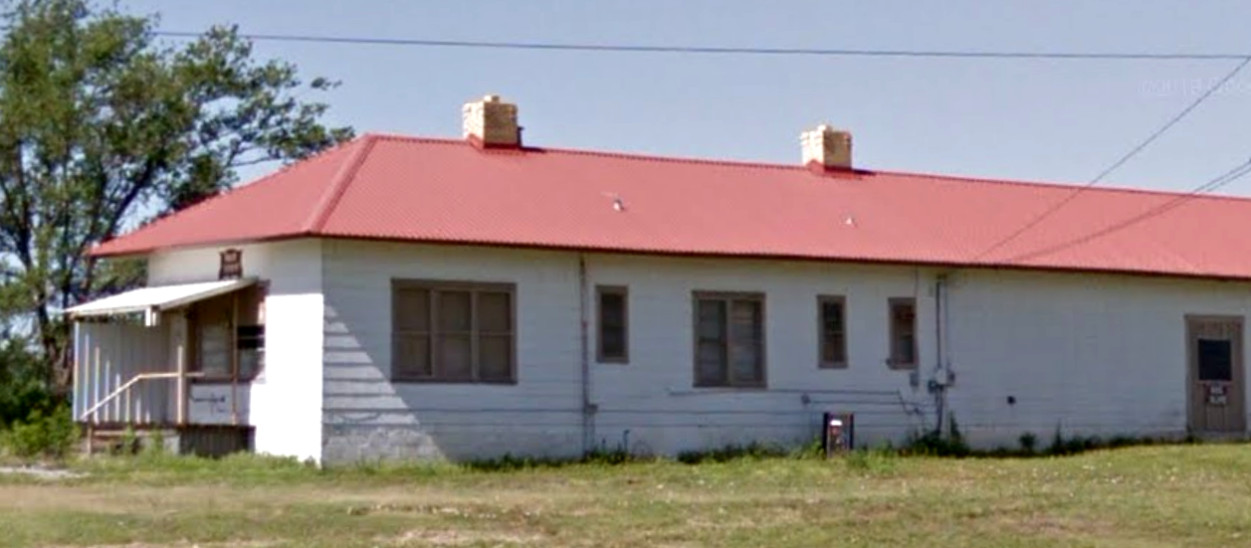Texas Railroad History - Tower 179 - Shamrock
A Crossing of the Fort Worth & Denver
Northern Railroad and the
Chicago, Rock Island & Gulf Railway
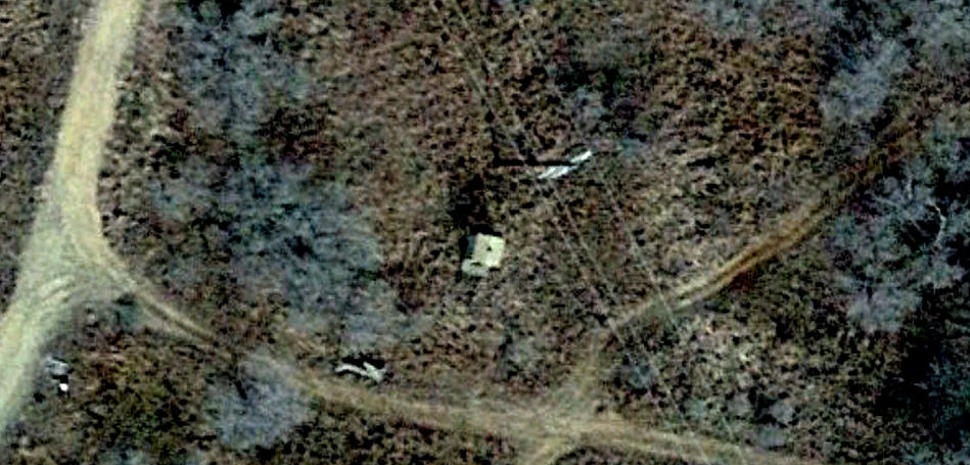
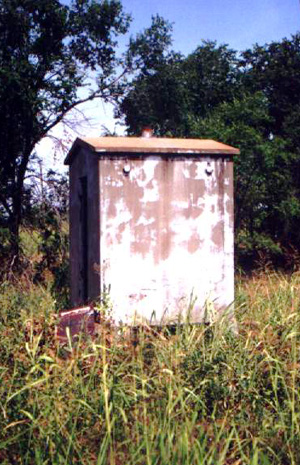
Above: Out of service for more than fifty years, and
with its last tracks gone for forty, the Tower 179 equipment cabin continues
its lonely vigil on the outskirts of Shamrock, controlling signals for the ghost
trains that roam the abandoned rights-of-way at night. (left, Google Earth, 2020;
right, Jim King, 2008)
Shamrock, located in the
eastern Panhandle of Texas along the famed Route 66 highway, was named by an Irish immigrant rancher, George
Nickel, who moved into the area in 1890. Settlement accelerated when
the Chicago, Rock Island & Gulf (CRI&G) Railway built through the vicinity
in 1902 as they constructed a rail line from Oklahoma City through
Amarillo to
Tucumcari, New Mexico. Although the Shamrock post office had closed by then and
locals were using competing names for the area,
Rock Island chose to name the stop Shamrock; this was likely the name already
used on Rock Island's survey documentation. The Shamrock post office re-opened and
the new town quickly grew up around the rail line. Oil was discovered in the eastern Panhandle
in 1926, and in the 1930 census, Shamrock reached its peak population, a little
under 4,000, the largest town in Wheeler County though not the county seat.
The presence of oil attracted the interest of the Fort Worth &
Denver City (FW&DC) Railroad, owned by the Burlington rail system. The FW&DC had
built the first rail line through the Texas Panhandle, but the Atchison, Topeka
& Santa Fe (AT&SF) Railway had become the leading railroad serving
Panhandle business. Seeking to compete more effectively but not wanting to revise the FW&DC charter to do so,
Burlington chartered a new railroad, the Ft. Worth & Denver Northern (FW&DN), on
May 20, 1929. The plan Burlington filed with the Interstate Commerce Commission
(ICC) was for the FW&DN to start from the FW&DC main line at Childress and build north through Wellington to Shamrock, cross the
Rock Island, and continue north and west to Pampa, a major town on Santa Fe's
main line. The FW&DN would pass through the heart of the new oil and gas fields
east of Pampa. Rock Island formally opposed Burlington's plan and filed an
application of their own. They proposed to build south from Shamrock to Wellington and then east to
Quanah
to a connection with the St. Louis San Francisco Railroad. The ICC eventually
granted Burlington's application, but they incorporated a provision giving Rock Island four months to exercise an option
to buy 50% of the track segment between Shamrock and Wellington once
construction was finished. The FW&DN proceeded to build from Childress all the way to Pampa
in 1932, but Rock Island did not exercise its
option.
The FW&DN, 110 miles on
a completely new right-of-way, became the last major rail construction project completed in
Texas until Santa Fe built 49 miles between Sanger and Dallas in 1955. An
automatic interlocker, Tower 179, was established in 1932 to control the Rock Island
/ FW&DN crossing in Shamrock. In 1979, the FW&DN line
from Wellington through Shamrock to Pampa was abandoned and the interlocker was
taken out of service. Following Rock Island's bankruptcy in 1980, their line through Shamrock was abandoned in 1982.
Since that time, there has been no rail service in Shamrock. The primary
transportation artery is Interstate 40 which crosses east/west along the north
edge of Shamrock, following the original path of Route 66.
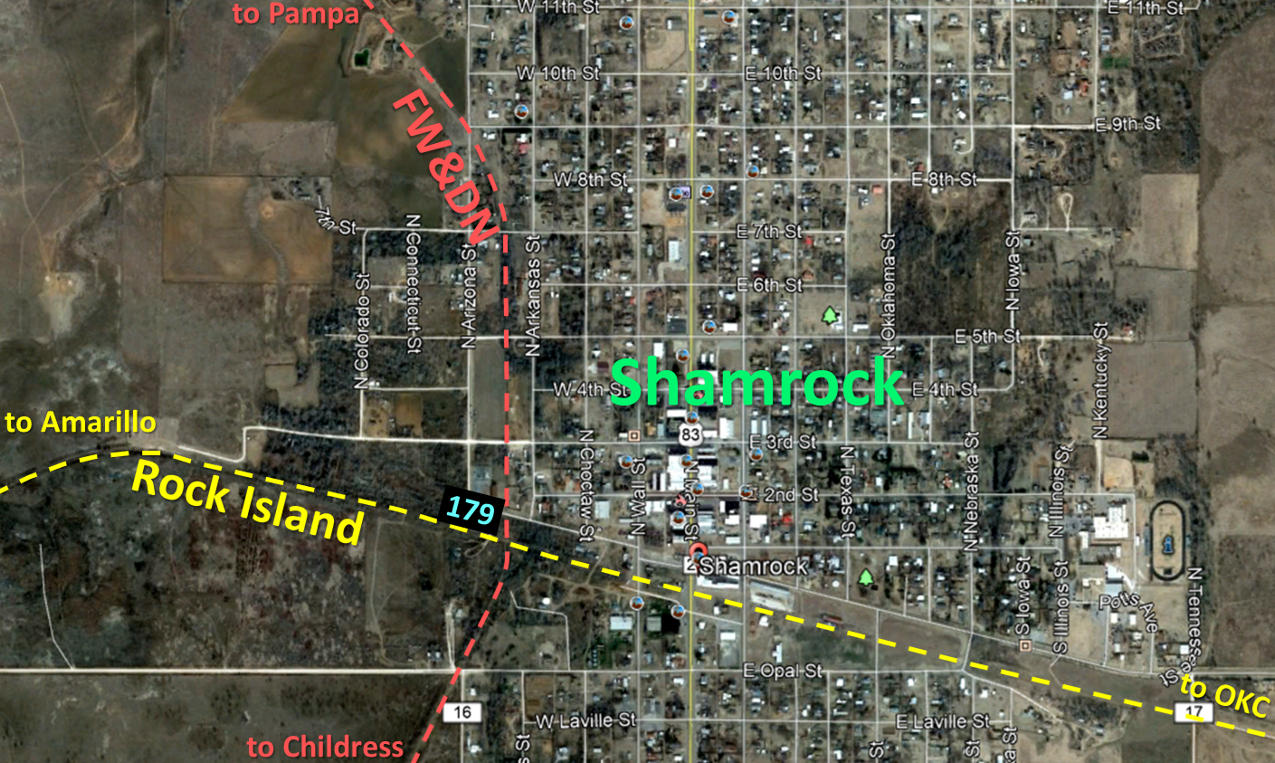
Above: As the map indicates,
the FW&DN route through Shamrock skirted the west side of town. By 1932, the
town was well established, hence a right-of-way directly through town would have been
prohibitively expensive and its acquisition subject to lengthy delay. Below
Left: Looking southeast from Railroad Ave., the Tower 179 cabin
is visible on Google Street View. It sat in the northwest corner of the diamond.
With the rails pulled up, a 40-year forest has grown up at the former crossing. (Google Street
View, 2016) Below Right: Table
D in the January, 1934 edition of Railway
Signaling identifies Shamrock as the location of a 9-signal automatic
interlocker installed by the CRI&G in 1932.

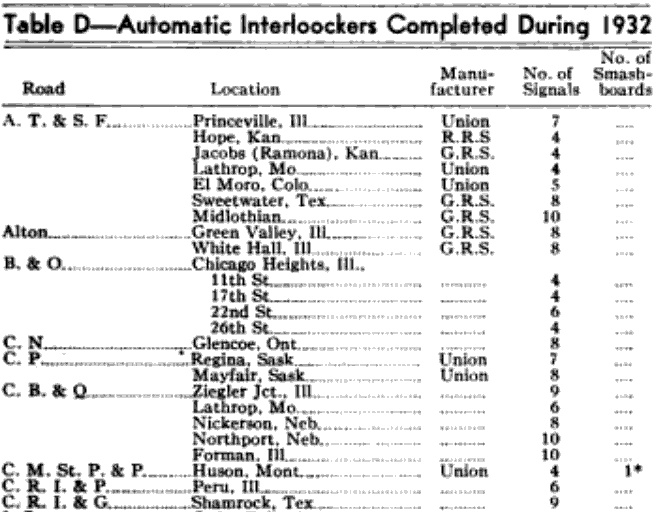
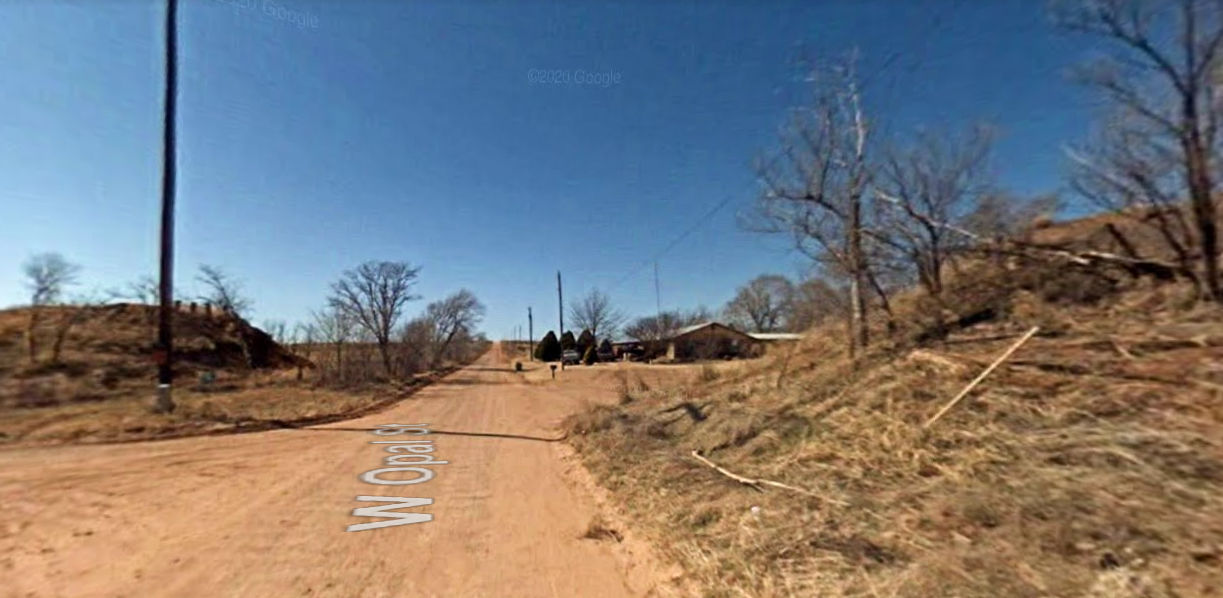
Above: To reach the proper
elevation to cross the Rock Island at grade, the FW&DN needed to enter the south
side of Shamrock on a large fill. This required a trestle over Opal St. for
which remnants of the bridge pilings remain visible behind the utility pole.
Below Left: Gone but not forgotten, the path of the FW&DN is
remembered by a white crossbuck on W. 7th St.
Below Right: The FW&DN crossed Arizona St. at an angle; the
grade has been re-used as a utility right-of-way. (Google Street Views)
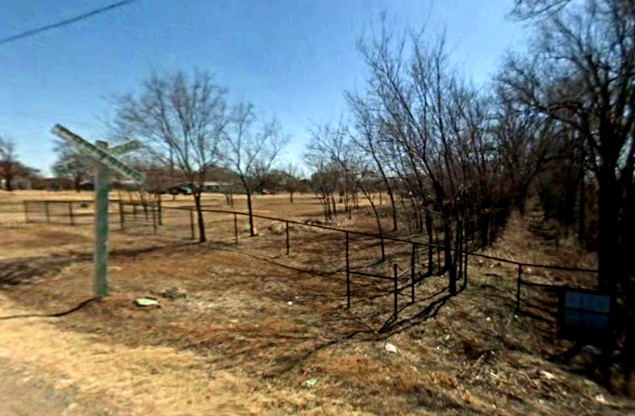
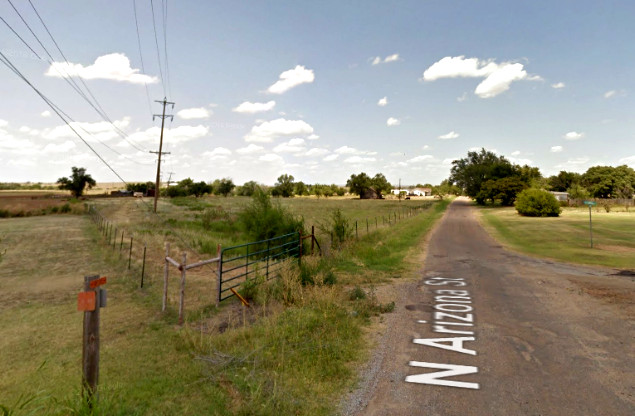
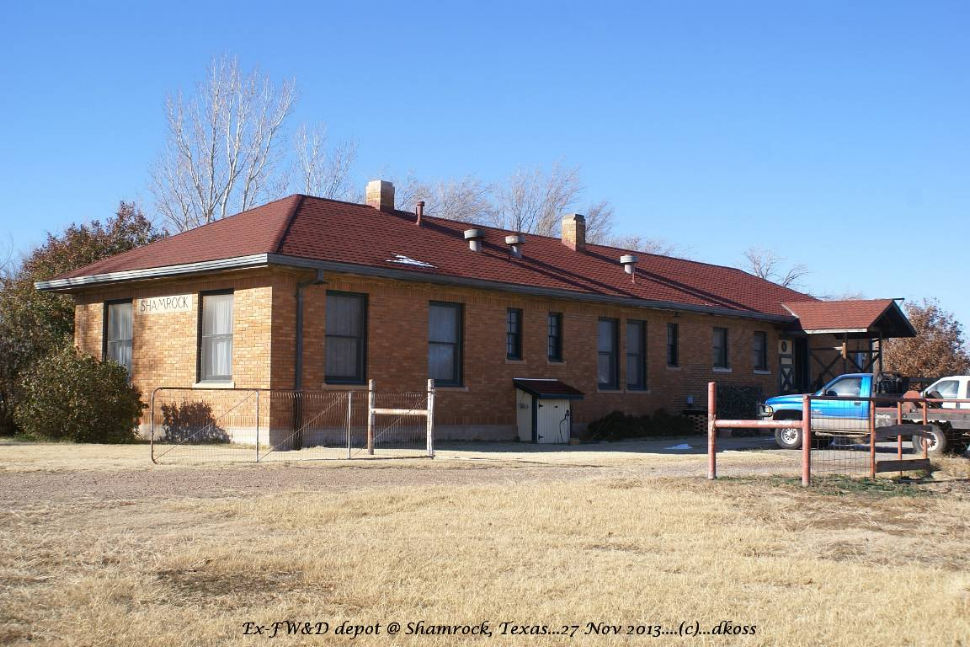
Above: The FW&DN passed
through an undeveloped area on the west side of Shamrock that has become
residential, so it makes sense that its depot appears to have survived as
someone's house! Below: This
2019 Google Street View shows the station still standing at 601 N. Arkansas St.
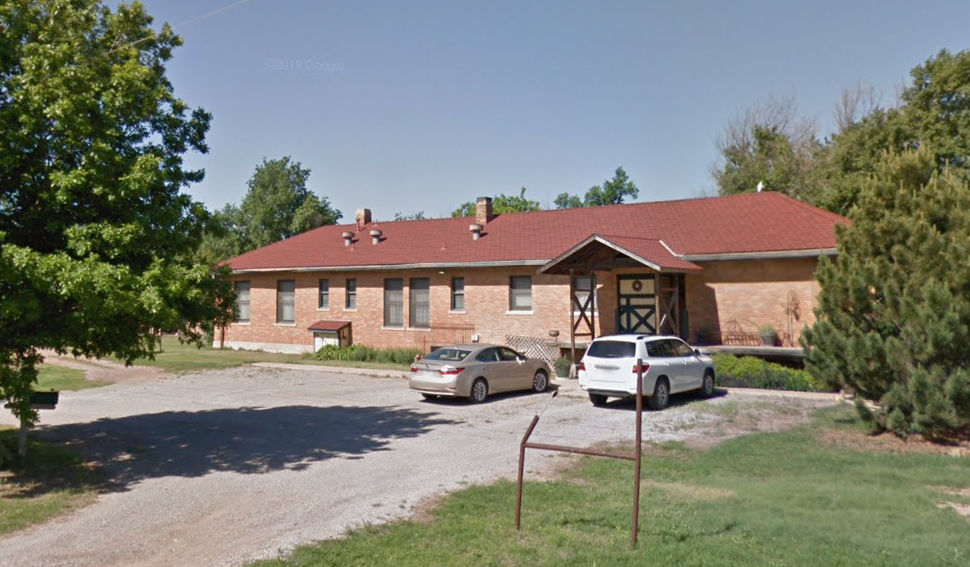
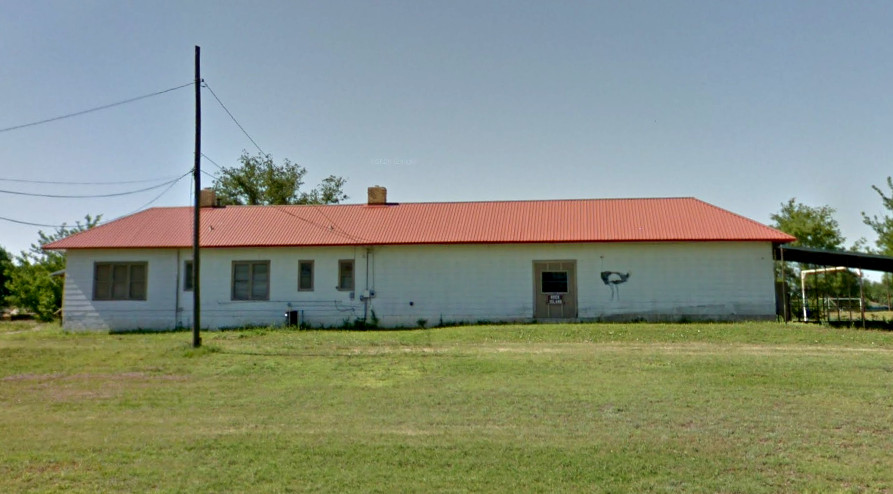
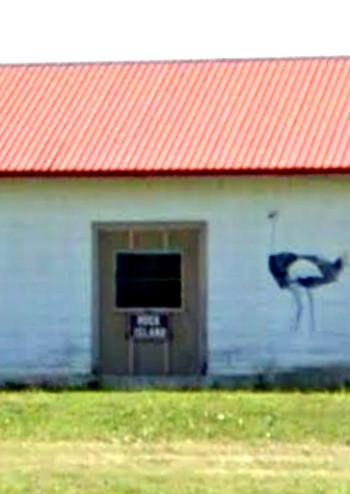
Above and Below: On the east
side of town, the Rock Island depot sits along the abandoned right-of-way. The
intent of its repurposing has not been determined. Though not particularly
legible, the signs on the front and side say "Rock Island". (Google Street View)
